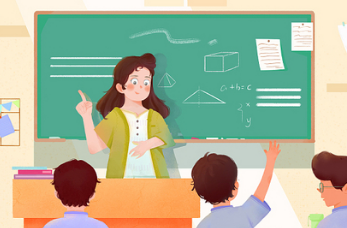下载全文
高一英语教科书的必修一知识点总结
在学习上,要正确分析自己:目前学习状态,优势与劣势,问题,问题原因,解决办法,时间分配等。然后提出相应的目标,并制定达到目标的详实计划。以下是小编给大家整理的高一英语教科书的必修一知识点总结,希望能帮助到你!
高一英语教科书的必修一知识点总结1
1.because of因为……(注意和because 的区别)
2.even if(=even thoug)即使,用来引导让步状语从句
3.come up走上前来,走近,发生,出现 come up with 追上,赶上,提出
4.communicate with sb和某人交流
5.be different from…与……不同
be different in…在……方面不同
Most of my projects are different in performance.我多数作品的演奏风格都不同。
6.be based on以……为基础
7.at present目前,眼下for the present眼前;暂时
8.make(good/better/full)use of
9.the latter后者 the former前者
10.a large number of大量的 the number of…的数量
11.such as例如
12.hold on坚持住,握住不放;(打电话时)等—会
13.…you will hear the difference in the way(that/in which)people speak.
你会听出人们在说话时的差异。
14.play a role/part(in)在…中担任角色;在…中起作用;扮演一个角色
15.the same…as…与……一样
16.at the top of…在…顶上
at the bottom of在……底部
17.bring up教养,养育;提出
18.request sb(not)to do sth.要求某人做/不要做某事
19.be satisfied with…对……感到满意,满足于
20.suggest v.(request,insist…)
I suggested you do what he says.我建议你按照他说的去做。
I suggest you not go tomorrow.我想你明天还是不要去了。
His pale face suggested that he was in bad health.他苍白的脸色暗示了他身体不好。
注意:insist 意思为“坚持要求”时后面的that从句用虚拟语气;如果insist 意为“强调,坚持认为”的时候,从句可以用任何所需要的时态。例如:She insisted that she didn’t tell a lie.她坚持认为她没撒谎。
21.according to…按照…根据…
高一英语教科书的必修一知识点总结2
一、present simple and present continuous 一般现在是和现在进行时
1,present simple: 反复进行的,经常性的动作(惯例习惯)
Eg, He watches soap operas.
及状态 I live in Budapest.
一般现在时常和下列时间状语连用:always, usually, from, time to time, twice a week, rarely, seldom, once a month, never.
2,现在进行时:说话时正在进行的动作(现在,此刻)
一定时间段内经常进行的动作
和现在进行时连用的时间状语有just, now, at the moment, at present.
二、future:arrangements and intentions 将来的安排和打算
1、be going to 表示打算要做的事情。
2、现在进行时表示已经确定或安排好事情。
Eg, I’m getting married in June.
3、一般现在是表示不可改变的官方活动或时间表
The summer term begins on the 15th of February.
三、past simple and past continues
1,psat simple :一般过去时,表示过去完成的动作或过去的情境和习惯。
Eg: She climb the stairs and went to her room.
用一般过去时要在规则动词词尾加-ed,或用不规则动词的过去式,一般过去式的疑问句和否定句用did 和didn’t 加动词原形。
2、past continuous过去进行时:过去某段时间正在进行的动作形成某些事件发生的情境动作。
Eg, It was raining during the whole match.
当过去进行时和一般过去时出现在同一个句子中时,过去进行时描述故事发生的背景,儿一般过去时则报道该事件。
Eg, We driving along a country lane when, suddenly a car drove past us.
Form: 过去进行时的结构是:主语+was /were +动词-ing形式。
Eg, The driver was sitting behind the wheel.
四、present perfect and past simple。现在完成时和一般过去式,现在完成时表示发生在过去的事情对现在依然有明显的影响
发生在过去的动作但是不知道动作发生的时间或对动作发生的确切时间不感兴趣。
现在完成时经常和下列时间状语连用:
Before, ever, never, already, and , yet. already 用于肯定句,yet 用于疑问句和否定句。
Venus and Serena have played each other before.(重要的事他们过去进行了比赛,但是何时比赛并不重要—现在完成时)
Venus and Serena have played each other in June 1999.( 我们知道此事发生的确切时间—一般过去时)
五、The passive 被动语态
在下列情况下使用被动语态:
1、不知道耶不需要知道谁做的这件事。
2、动作的执行者“显而易见”
3、动作本身比动作执行者更重要或不想指出谁做的这件事。
4、在书面语特别是在科技报告、报刊文章中被动语态比主动语态更正式。
Form:
Tense时态 form 形式 +past
一般现在时 am/is/are +past participle 过去分词
现在进行时 am/is/are being +pp
现在完成时 have/has been +pp
一般过去时 was/were +pp
过去进行时 was/were being +pp
六、have to/not have to, can/can’t, ought to/ought not to uses 用法:
have to 用来表示义务责任,You have to pass your test before you can drive.
Don’t have to 表达不必:We don’t have to wear uniforms at our school.
Can 用来表示允许或请求许可或者表示某事可能发生。
You can buy CDs at the market.
Can’t 表示禁止或不可能:You can’t go out tonight.
Ought to 表示应该做某事。You ought to visit your grandparents this weekend.
Ought not to 表示不应该做某事You ought not to walk alone at night.
Form 形式
can/can’t, have to/not have to 及ought to/ought not to 后用动词原形。
现在完成时,一般现在时,一般过去时
很多语言都有现在完成时态,因此常将它和一般现在时混淆,在英语中,用现在完成时描述发生在过去但对现在又影响的事件。如果涉及到过去某时间,则要用一般过去时。
如果过去事件的确切时间或日期不重要,也可以用现在完成时。
高一英语教科书的必修一知识点总结3
1. win, beat, defeat 表示获胜、取胜的词语
(1) win v. 赢……,获胜,接比赛或奖项 win a game / a prize / an honor / a race. / Our team won the game 8 to 7. / He won by five points. / He won her love at last. / He won the first place in the competition.
(2) beat + 对手,表打败(尤指体育比赛) I can easily beat him at golf.
(3) defeat 表战胜,接对手The enemy was defeated in the battle.
2. in the end, finally, at last
三者均可表示“(经过周折、等待、耽误)最后,终于”之意。不同的是:
finally 一般用在句中动词前面,而 at last 与 in the end 的位置则较为灵活;
三者中at last 语气最为强烈,且可单独作为感叹句使用。After putting it off three times, we finally managed to have a holiday in Dalian. / At last he knew the meaning of life. / At last! Where on earth have you been? / But in the end he gave in.
另外,finally还可用在列举事项时,引出最后一个内容,相当于lastly。 Firstly, we should make a plan; secondly, we should carry it out; finally we should make a conclu- sion.
3. by sea, by the sea, in the sea, on the sea, at sea
(1) by sea “走海路,乘船”,用来表示交通方式,同 by ship 同义。 These heavy boxes should be sent by sea.
(2) by the sea “在海边”,相当于 by (at) the seaside。The children enjoyed themselves by the sea on Children's Day.
(3) in the sea “在海里,在海水中” There are many plants and animals in the sea.
(4) on the sea “在海面上”,“在海岸边”。I want to live in a town with a beautiful position on the sea.
(5) at sea 在海上;在航海 When he woke up, the ship was at sea.
4. be afraid, be afraid to do sth., be afraid of (doing) sth.
(1) be afraid 意为“担心,害怕”,多用于口语,常用来表示一种歉意,或遗憾,后可接 so 或 not,也可接 that 从句。I'm afraid (that) 其语意相当于 I'm sorry, but...。
-- Are we on time? 我们准时吗? -- I'm afraid not. 恐怕不准时。I'm afraid you'll get caught in the rain.
(2) be afraid to do sth 常表示“由于胆小而不敢做某事”。She is afraid to be here alone. / He is afraid to jump into the river from the bridge.
(3) be afraid of (doing) sth. 常表示“担心或害怕某事(发生)”。I was afraid of hurting her feelings.
5. live, living, alive, lively
(1) live adj.
① 活的;活生生的;(只修饰生物;只作前置定语) The laboratory is doing experiments with several live monkeys.
② 实况直播的 (不是录音)It wasn't a recorded show. It was live.
③ 带电的;燃着的;可爆炸的 This is a live wire.
(2) living adj. 活着的,有生命的(作表语或定语) She was, he thought, the best living novelist in England. / The old man is still living. (或alive)
(3) alive adj. ① 活着的;② 有活力的;有生气
作后置定语:Who's the greatest man alive?
作表语:Was the snake alive or dead? / My grandmother is more alive than a lot of young people.
作补语:Let's keep the fish alive.
(4) lively adj. 活泼的;有生气的;活跃的(作表语或定语) The music is bright and lively.
高一英语教科书的必修一知识点总结相关文章:
★ 高一英语必修一知识点归纳总结
★ 高一英语必修一知识点汇总笔记
★ 人教版高一英语必修一知识点总结
★ 高一英语必修一知识点总结
★ 人教版高中英语必修一语法知识点总结
★ 高一英语必修一知识点总结人教版
★ 高一英语必修一重要知识点总结笔记
★ 高一英语必修一知识点总结外研版
★ 人教版高一英语必修一知识点
★ 人教版高一英语必修一知识点整理
VIP会员可免费下载与转存
加入会员


 微信支付
微信支付